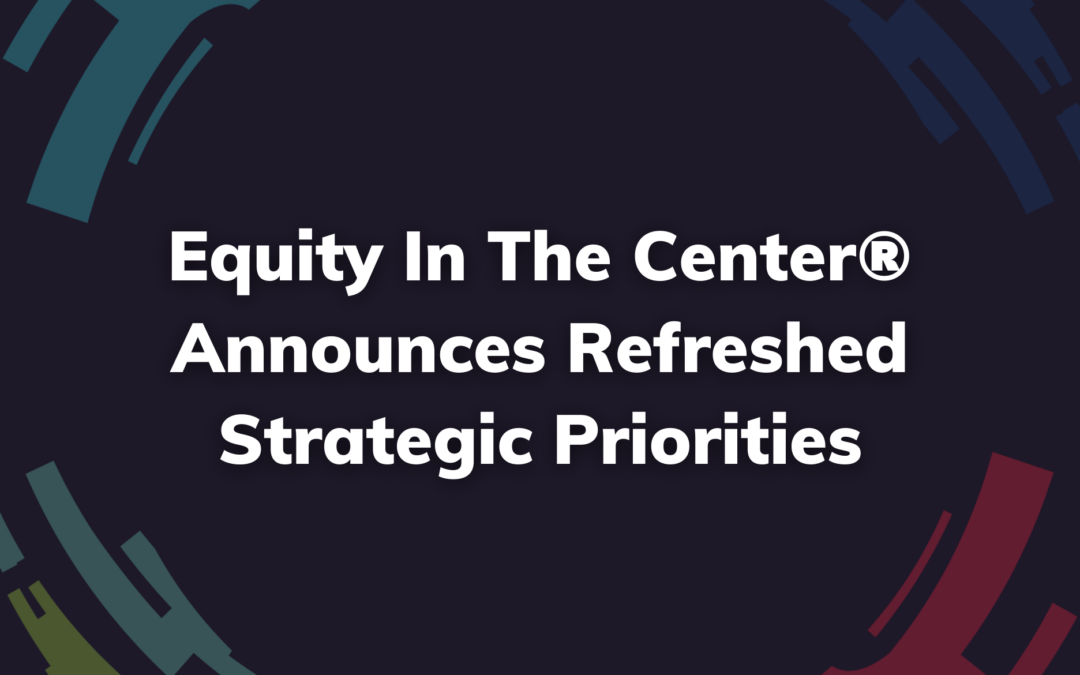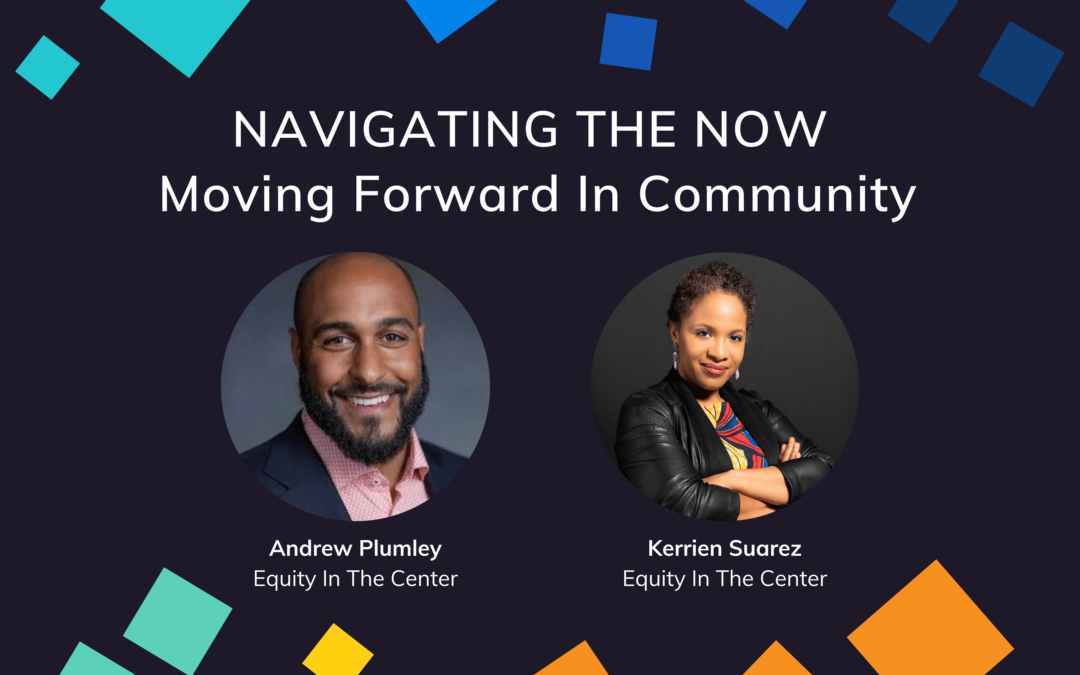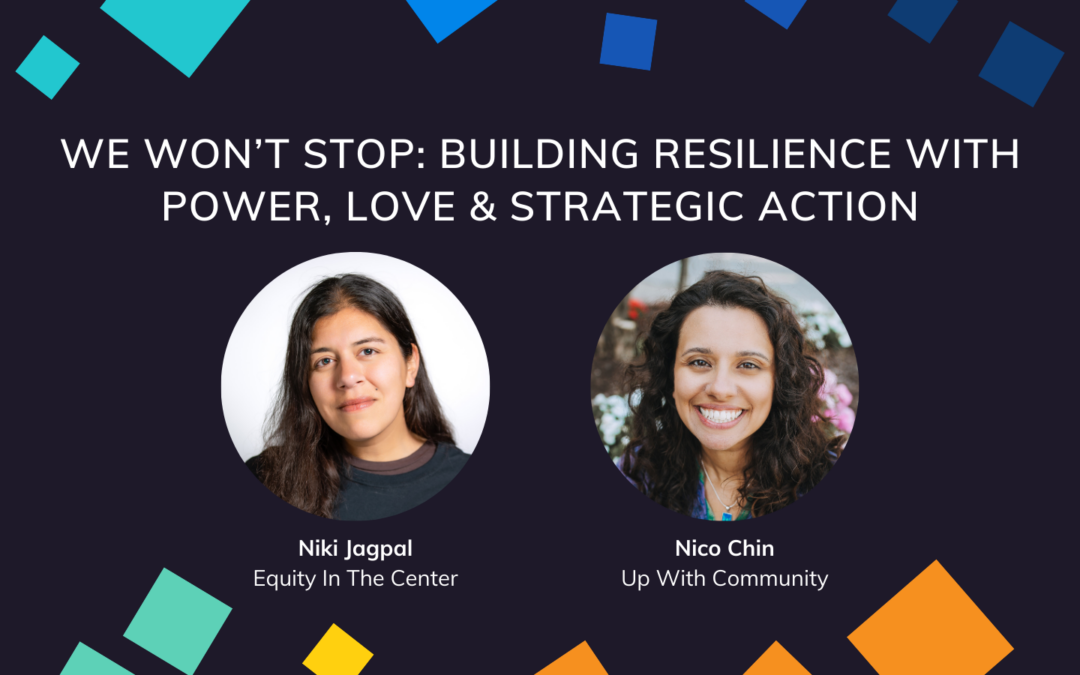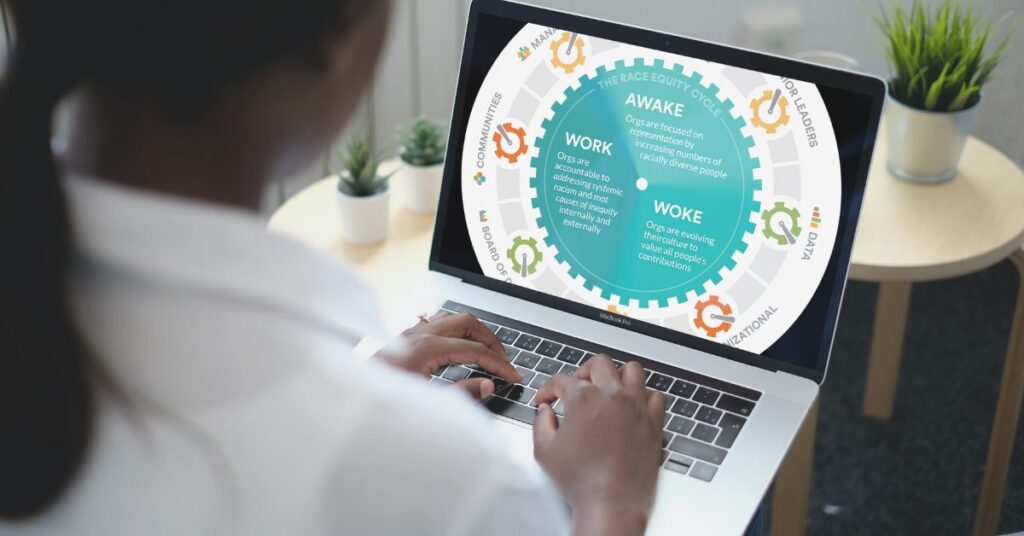
Updated on April 10, 2023
Achieving race equity — the condition where one’s racial identity has no influence on how one fares in society — is a fundamental element of social change across every issue area in the social sector. Building a Race Equity Culture™ is the foundational work when organizations seek to advance race equity; it creates the conditions that help us to adopt anti-racist mindsets and actions as individuals and to center race.
The Equity In The Center® team interviewed a series of organizations in 2017 as a part of our Dialogue and Design Sessions. This encompassed in-depth interviews, periodic feedback discussions, and informal conversations with more than 140 Advisory Committee members and colleagues. Through this exploratory research phase, we classified the way organizations were operating as they worked on race equity into three stages of what we coined the Race Equity Cycle®: Awake, Woke, and Work.
Our team also identified groups of practices and processes, called levers, that measurably advance progress through the Race Equity Cycle, helping organizations build a Race Equity Culture. These levers align to seven management and operational areas: senior leaders, managers, community members, data collection, board of directors, organizational culture, and learning environment.
From this initial data collection and interviews with our stakeholders, the Awake to Woke to Work™ framework for organizational transformation was developed:
- At the AWAKE stage, organizations focus on people and on building a workforce and boards composed of individuals from different racial backgrounds. The primary goal is representation, with efforts aimed at increasing the number of people of different racial backgrounds.
- At the WOKE stage, organizations focus on culture and on creating an environment where everyone is comfortable sharing their experiences and is equipped to talk about race equity and inequities. Organizations also name that their goal is to dismantle white supremacy internally and in broader society. The primary goal is inclusion and internal change in behaviors, policies, and practices.
- At the WORK stage, organizations focus on systems to improve race equity. When your organization has fully committed itself to a Race Equity Culture, the associated values become part of the organization’s DNA. It moves beyond special initiatives, task force groups, and check-the-box approaches into full integration of race equity in every aspect of its culture, operations, and programs, in addition to regularly administering a race equity assessment to ensure race-based disparities have been eliminated or significantly narrowed.
The progression of these stages reflects an organization’s advancement and deepening of its race equity work.
Our research showed that one person’s perception of the organization often does not reflect the perception of colleagues across all levels of the organization. For example, a team working on a specific project will be aware of the tasks involved and their progress, whereas colleagues outside of the team may not. It’s important to acknowledge this difference in perception and use it to develop a comprehensive view of the organization.
This led us to begin work on the Race Equity Cycle Pulse Check™, a tool that teams can use to gather perspectives from multiple layers of an organization to create a snapshot of where they are in their race equity efforts. Only one person can submit a response to each of the 23 questions, which we hope encourages team discussions to come up with a consensus on the answer choice. Reaching a consensus when it comes to decision-making is a way a group can share power and build a stronger community. It also helps gain a better understanding of the distinction between how an organization talks about its work, versus how it actually functions day to day. It requires that we all be honest with one another about our observations and experiences.
The Pulse Check is a free online tool that assists organizations with placing themselves at the Awake, Woke, or Work stages and provides suggested next steps. Access to the tool is currently paused until late spring/early summer 2023, when we will launch registration for a cohort program designed to provide organizational teams with coaching and capacity building support as they complete the assessment and work to develop an action plan based on its findings.
Want to be notified of the Race Equity Pulse Check Cohort launch? Sign up here.
Resources:
- VIDEO: An Introduction to the Race Equity Cycle Pulse Check™
- Reaching a Consensus:
- Group Norms For Breakthrough Social Change | OpenSource Leadership Strategies
- Communication Guidelines For A Brave Space | AWARE-LA
- Shared Power
- Moving Toward a Culture of Shared Power that Prefigures a Liberated World | Change Elemental
- Introduction to Power | Nonprofit Quarterly
- Experiments in Liberatory Leadership | Nonprofit Quarterly
- Organization Tools to Advance Racial Equity
- Building an Anti-Racist Workplace | TIME’S UP Foundation
- Business Case for Racial Equity | W.K. Kellogg Foundation
- Racial Equity Decision-Making Tool (REDT) by Maggie Potapchuk | MP Associates; Contributor: Raquel Gutierrez | Blue Agave Partners
- Organizations Advancing Racial Equity
- Race Equity Assessments & Race Equity Impact Assessments for Organizations:
- Racial Equity Assessment | Race Matters Institute
- Power Moves Toolkit | NCRP
- Moving a Racial Justice Agenda: Organizational Assessment: Are You Ready? | Western States Center (WSC)
- Racial Equity Impact Assessment | RaceForward
- Organizational Assessment Tools and Resources | Racial Equity Tools
